Bipolar Switching Properties of Neodymium Oxide RRAM Devices Using by a Low Temperature Improvement Method
Abstract
:1. Introduction
2. Material and Methods
3. Results and Discussion
4. Conclusions
Acknowledgments
Author Contributions
Conflicts of Interest
References
- Chen, K.H.; Chang, K.C.; Chang, T.C.; Tsai, T.M.; Liao, K.H.; Syu, Y.E.; Sze, S.M. Effect of different constant compliance current for hopping conduction distance properties of the Sn:SiOx thin film RRAM devices. Appl. Phys. A 2016, 122, 228. [Google Scholar] [CrossRef]
- Chang, K.C.; Tsai, T.M.; Chang, T.C.; Syu, Y.E.; Liao, K.H.; Chuang, S.L.; Li, C.H.; Gan, D.S.; Sze, S.M. The Effect of Silicon Oxide Based RRAM with Tin Doping. Electrochem. Solid-State Lett. 2012, 15, H65–H68. [Google Scholar] [CrossRef]
- Tsai, T.M.; Chang, K.C.; Chang, T.C.; Syu, Y.E.; Liao, K.H.; Tseng, B.H.; Sze, S.M. Dehydroxyl effect of Sn-doped silicon oxide resistance random access memory with supercritical CO2 fluid treatment. Appl. Phys. Lett. 2012, 101, 112906. [Google Scholar] [CrossRef]
- Chen, K.H.; Chang, K.C.; Chang, T.C.; Tsai, T.M.; Liao, K.H.; Syu, Y.E.; Sze, S.M. Hopping conduction properties of the Sn:SiOX thin-film resistance random access memory devices induced by rapid temperature annealing procedure. Appl. Phys. A 2015, 119, 1609–1613. [Google Scholar] [CrossRef]
- Chen, K.H.; Huang, J.W.; Cheng, C.M.; Lin, J.Y.; Wu, T.S. Nonvolatile transparent manganese oxide thin film resistance random access memory devices. J. Jpn. Appl. Phys. 2014, 53. [Google Scholar] [CrossRef]
- Acharyya, D.; Hazra, A.; Bhattacharyya, P. A journey towards reliability improvement of TiO2 based Resistive Random Access Memory: A review. Microelectron. Reliab. 2014, 54, 541–560. [Google Scholar] [CrossRef]
- Ghenzi, N.; Rubi, D.; Manganod, E.; Gimenez, G.; Lell, J.; Zelcer, A.; Stoliar, P.; Levy, P. Building memristive and radiation hardness TiO2-based junctions. Thin Solid Films 2014, 550, 683–688. [Google Scholar] [CrossRef]
- Lai, C.H.; Chen, C.H.; Tseng, T.Y. Resistive switching behavior of sol–gel deposited TiO2 thin films under different heating ambience. Surf. Coat. Technol. 2013, 231, 399–402. [Google Scholar] [CrossRef]
- Panda, D.; Tseng, T.Y. Growth, dielectric properties, and memory device applications of ZrO2 thin films. Thin Solid Films 2013, 531, 1–20. [Google Scholar] [CrossRef]
- Zhao, H.; Tu, H.; Wei, F.; Zhang, X.; Xiong, Y.; Du, J. The enhancement of unipolar resistive switching behavior via an amorphous TiOx layer formation in Dy2O3-based forming-free RRAM. Solid State Electron. 2013, 89, 12–16. [Google Scholar] [CrossRef]
- Cao, X.; Li, X.; Gao, X.; Yu, W.; Liu, X.; Zhang, Y.; Chen, L.; Cheng, X. Forming-free colossal resistive switching effect in rare-earth-oxide Gd2O3 films for memristor applications. J. Appl. Phys. 2009, 106, 073723. [Google Scholar] [CrossRef]
- Lin, K.C.; Tzeng, W.H.; Chang, K.M.; Chan, Y.C.; Kuo, C.C. Bipolar resistive switching effect in Gd2O3 films for transparent memory application. Microelectron. Eng. 2011, 88, 1586–1589. [Google Scholar]
- Chang, K.C.; Tsai, T.M.; Chang, T.C.; Syu, Y.E.; Wang, C.C. Reducing operation current of Ni-doped silicon oxide resistance random access memory by supercritical CO2 fluid treatment. Appl. Phys. Lett. 2011, 99, 263501. [Google Scholar] [CrossRef]
- Chen, K.H.; Chang, T.C.; Chang, G.C.; Hsu, Y.E.; Chen, Y.C.; Xu, H.Q. Low temperature improvement method on characteristics of Ba(Zr0.1Ti0.9)O3 thin films deposited on indium tin oxide/glass substrates. Appl. Phys. A. 2010, 99, 291–295. [Google Scholar] [CrossRef]
- Chen, K.H.; Chen, Y.C.; Yang, C.F.; Chen, Z.S.; Chang, T.C. Effects of Laser Annealing on the Electrical Characteristics of Dynamic Random Access Memory Using (Ba0.7Sr0.3)(Ti0.9Zr0.1)O3 Thin Films. Jpn. J. Appl. Phys. 2007, 46, 4197–4199. [Google Scholar] [CrossRef]
- Tsai, T.M.; Chang, K.C.; Chang, T.C.; Syu, Y.E.; Chuang, S.L.; Chang, G.W.; Liu, G.R.; Chen, M.C.; Huang, H.C.; Liu, S.K.; et al. Bipolar Resistive RAM Characteristics Induced by Nickel Incorporated into Silicon Oxide Dielectrics for IC Applications. IEEE Electron. Device Lett. 2012, 33, 1696–1698. [Google Scholar] [CrossRef]
- Tsai, T.M.; Chang, K.C.; Chang, T.C.; Chang, G.W.; Syu, Y.E.; Su, Y.E.; Su, Y.T.; Liu, G.R.; Liao, K.H.; Chen, M.C.; et al. Origin of Hopping Conduction in Sn-Doped Silicon Oxide RRAM With Supercritical CO2 Fluid Treatment. IEEE Electron. Device Lett. 2012, 33, 1693–1695. [Google Scholar] [CrossRef]

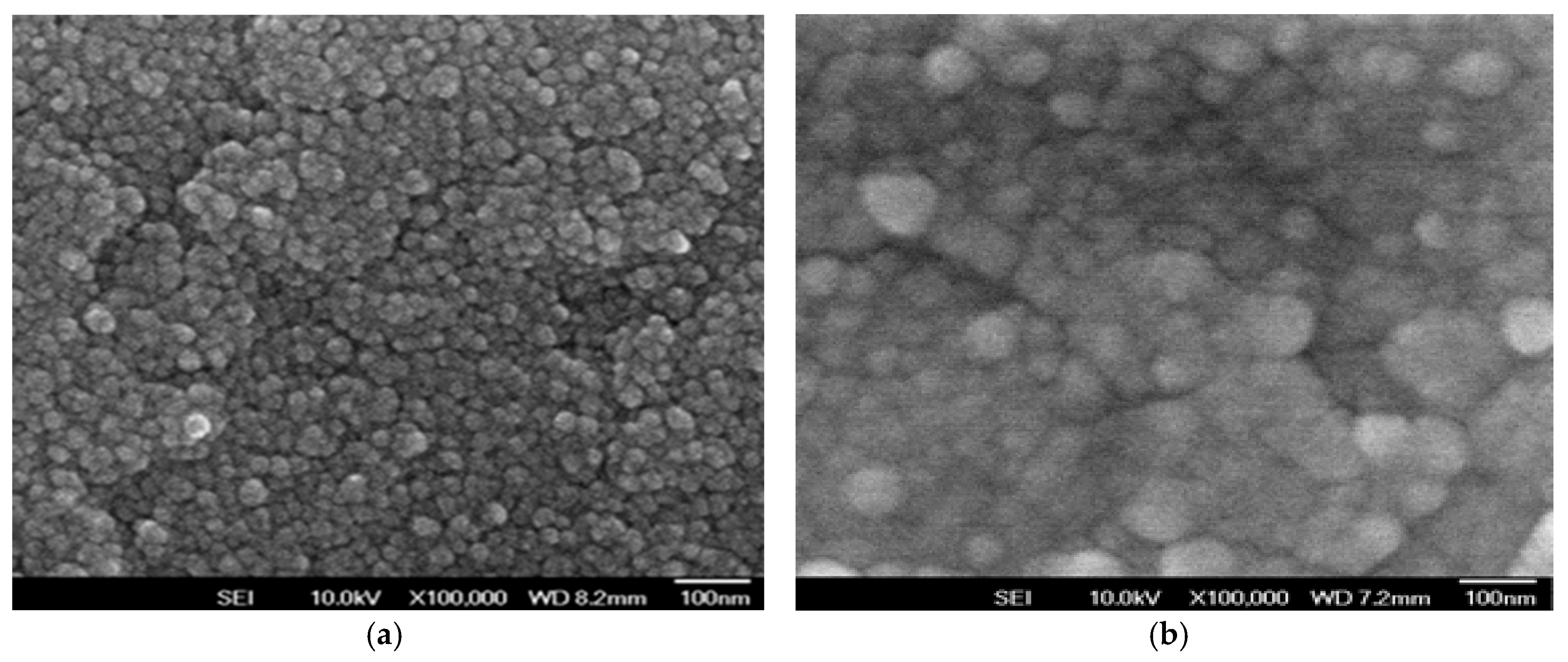
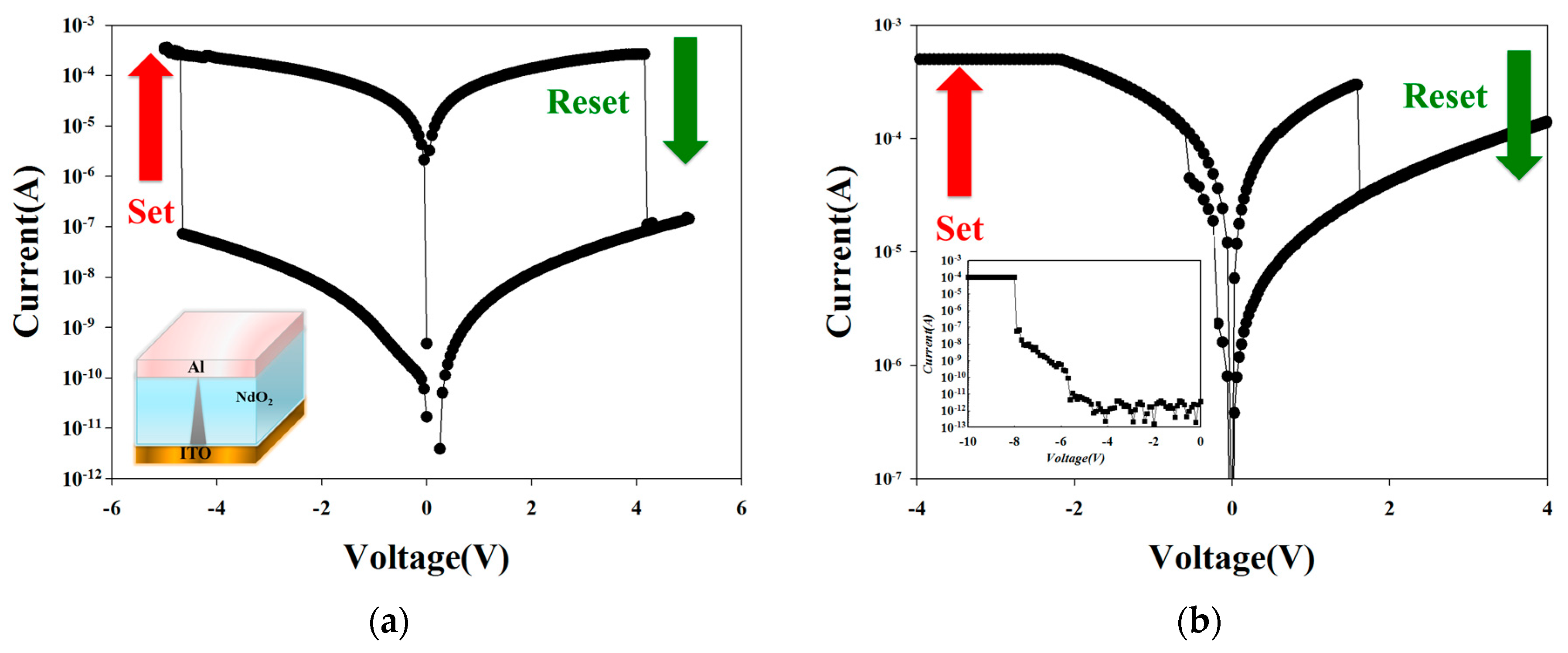
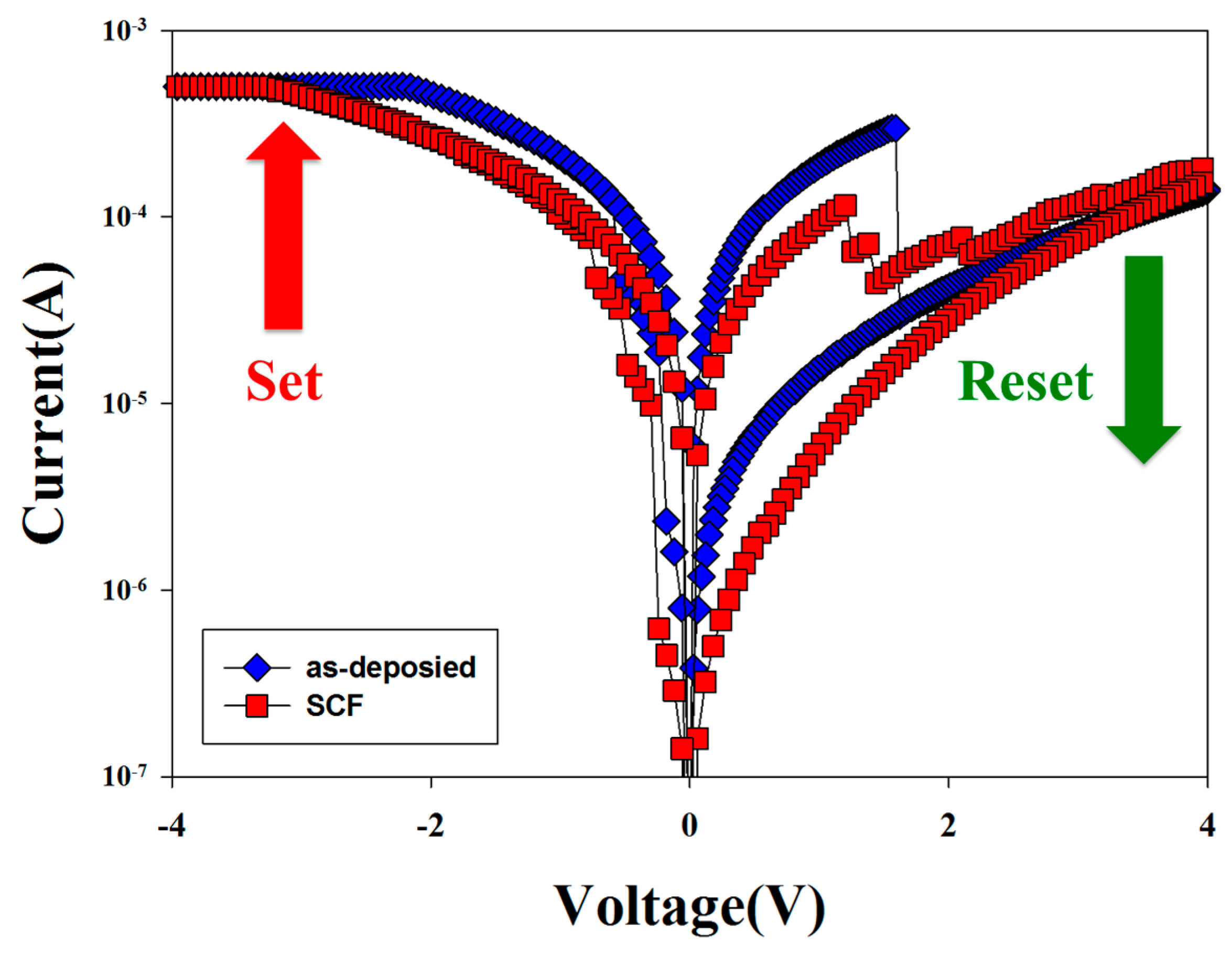

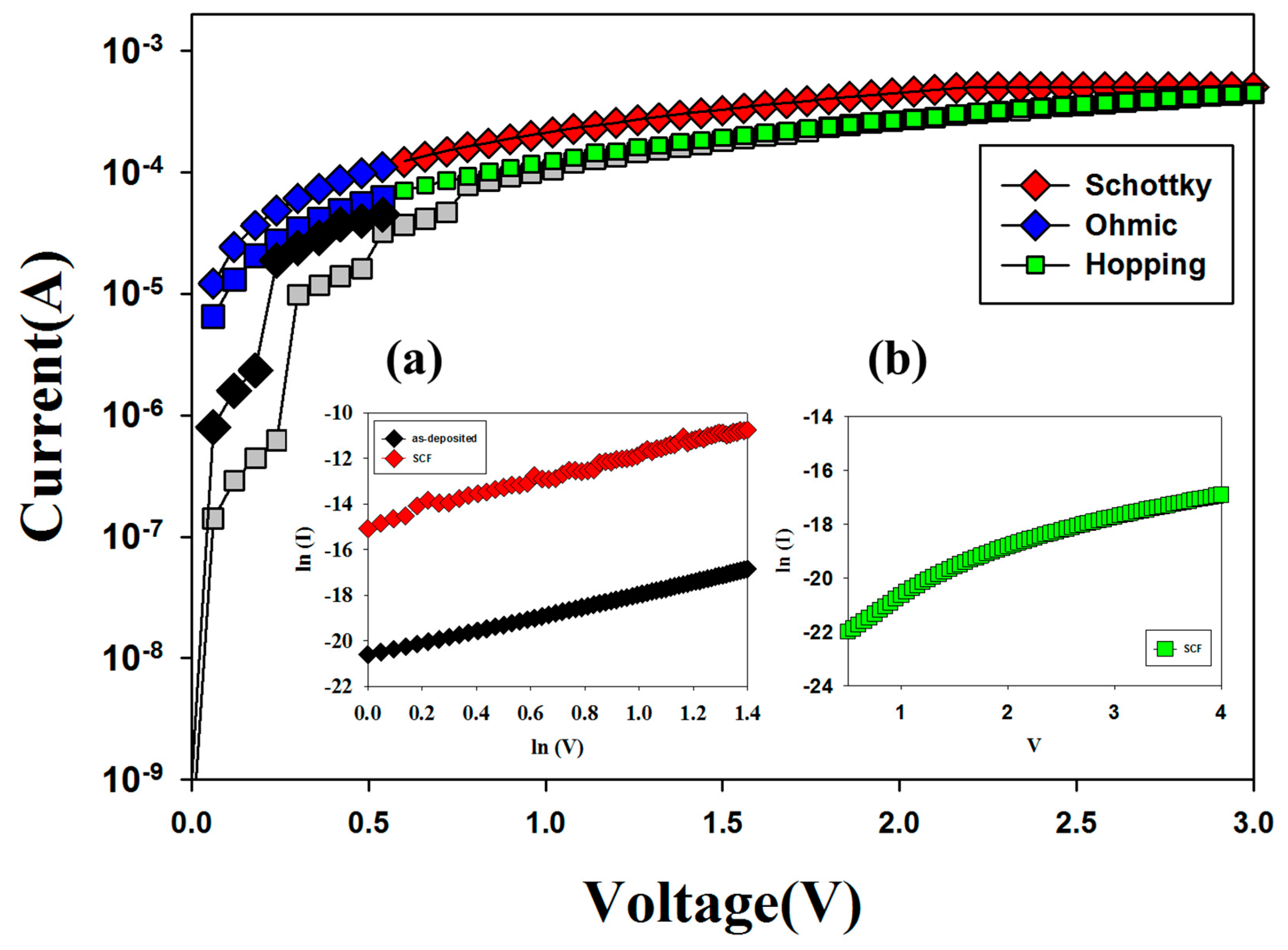
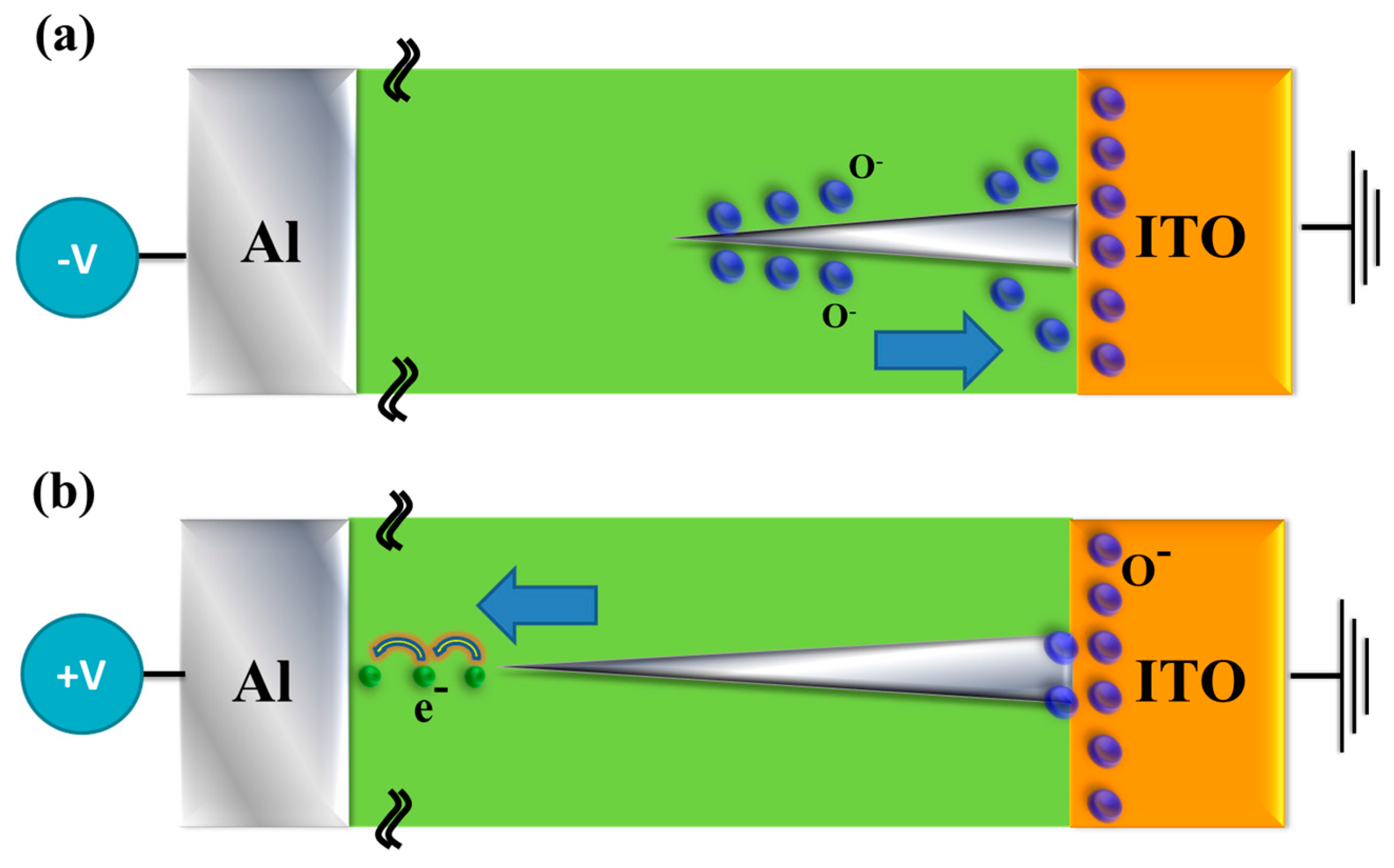
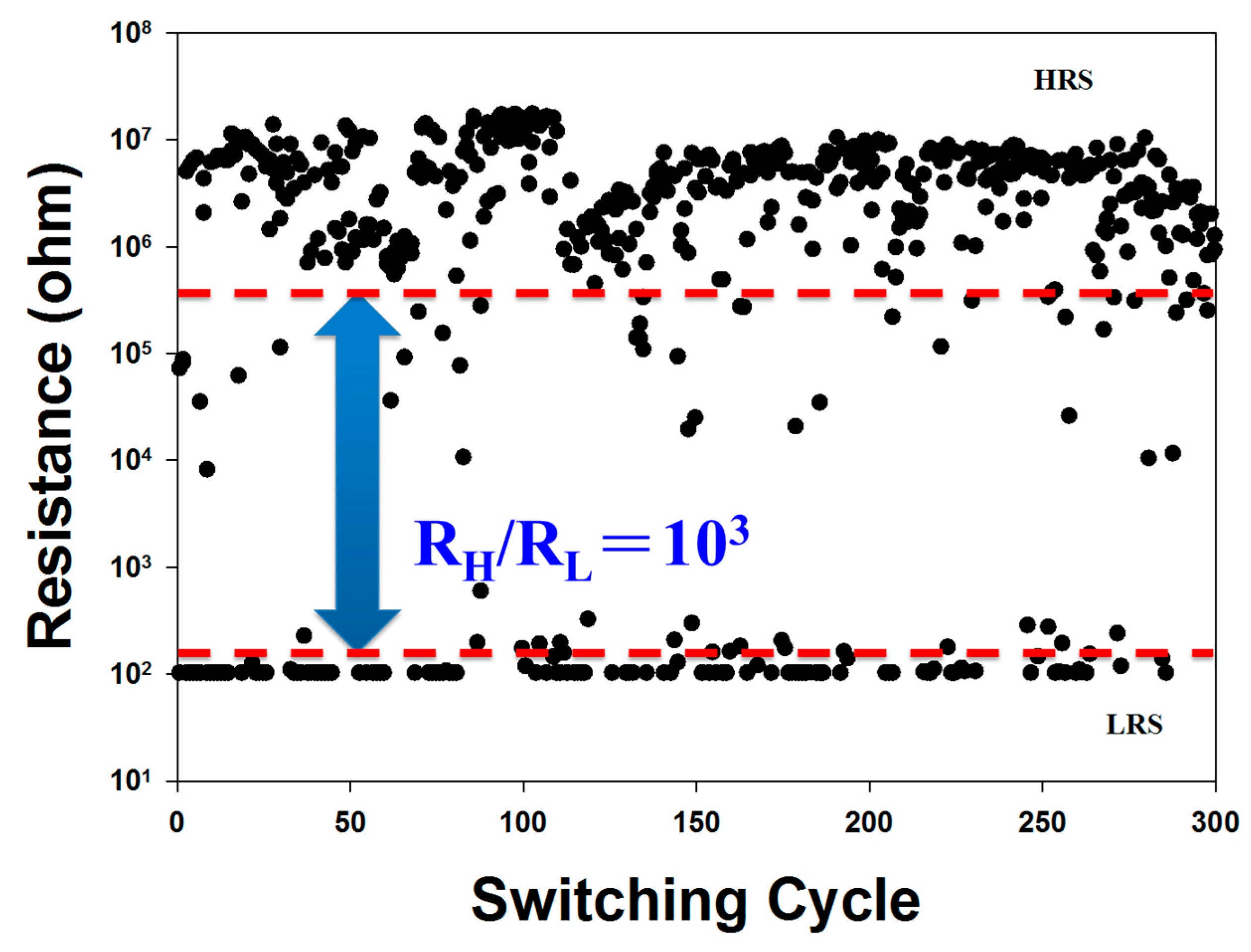
© 2017 by the authors. Licensee MDPI, Basel, Switzerland. This article is an open access article distributed under the terms and conditions of the Creative Commons Attribution (CC BY) license (http://creativecommons.org/licenses/by/4.0/).
Share and Cite
Chen, K.-H.; Kao, M.-C.; Huang, S.-J.; Li, J.-Z. Bipolar Switching Properties of Neodymium Oxide RRAM Devices Using by a Low Temperature Improvement Method. Materials 2017, 10, 1415. https://doi.org/10.3390/ma10121415
Chen K-H, Kao M-C, Huang S-J, Li J-Z. Bipolar Switching Properties of Neodymium Oxide RRAM Devices Using by a Low Temperature Improvement Method. Materials. 2017; 10(12):1415. https://doi.org/10.3390/ma10121415
Chicago/Turabian StyleChen, Kai-Huang, Ming-Cheng Kao, Shou-Jen Huang, and Jian-Zhi Li. 2017. "Bipolar Switching Properties of Neodymium Oxide RRAM Devices Using by a Low Temperature Improvement Method" Materials 10, no. 12: 1415. https://doi.org/10.3390/ma10121415



